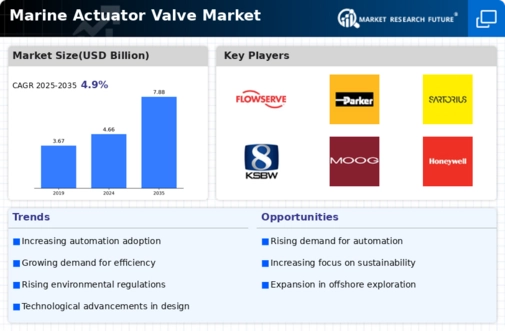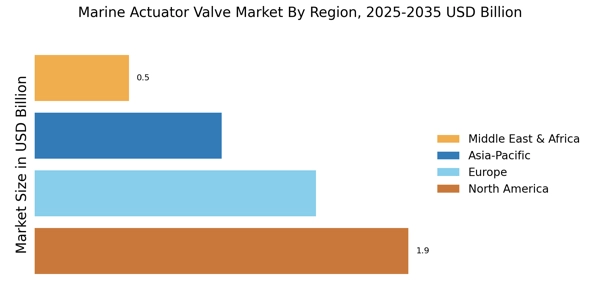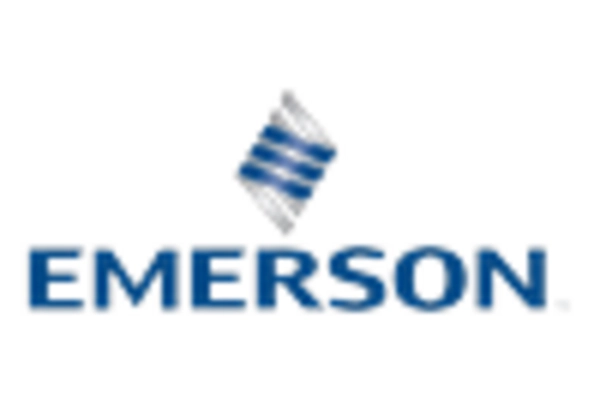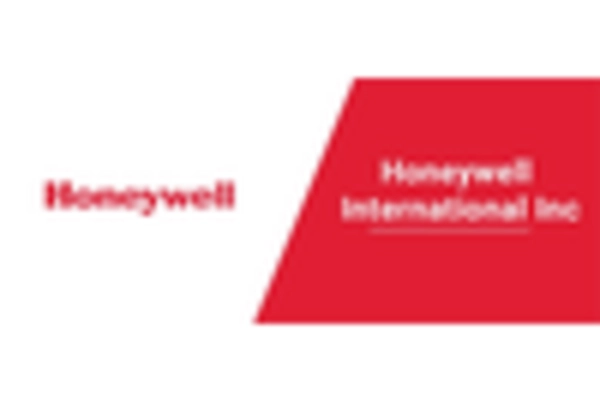Rising Demand for Automation
The Marine Actuator Valve Market is experiencing a notable increase in demand for automation across various marine applications. Automation enhances operational efficiency and safety, leading to a growing preference for automated systems in vessels and offshore platforms. According to recent data, the automation sector within marine operations is projected to grow at a compound annual growth rate of approximately 8% over the next five years. This trend is likely to drive the adoption of advanced actuator valves, which are integral to automated systems, thereby propelling the Marine Actuator Valve Market forward. As industries seek to optimize performance and reduce human error, the integration of automated solutions becomes increasingly critical, suggesting a robust future for actuator valve technologies.
Growth in Renewable Energy Sector
The Marine Actuator Valve Market is benefiting from the growth in the renewable energy sector, particularly in offshore wind and tidal energy projects. As countries invest in sustainable energy solutions, the demand for marine actuator valves in these applications is expected to increase. Recent projections indicate that the offshore renewable energy market could expand by over 20% in the next decade, creating a substantial opportunity for actuator valve manufacturers. These valves play a crucial role in managing fluid dynamics and ensuring operational efficiency in renewable energy systems. The shift towards cleaner energy sources is likely to drive innovation and investment in the Marine Actuator Valve Market, aligning with global sustainability goals.
Expansion of Marine Infrastructure
The Marine Actuator Valve Market is poised for growth due to the ongoing expansion of marine infrastructure, including ports, shipyards, and offshore facilities. Investments in infrastructure development are expected to increase significantly, with estimates indicating a potential rise of over 15% in capital expenditures in the marine sector. This expansion necessitates the installation of advanced marine actuator valves to ensure efficient fluid control and system reliability. As new projects emerge, the demand for high-quality actuator valves is likely to surge, creating opportunities for manufacturers and suppliers within the Marine Actuator Valve Market. The focus on building resilient and efficient marine infrastructure further underscores the importance of these components in modern maritime operations.
Technological Innovations in Valve Design
The Marine Actuator Valve Market is witnessing a wave of technological innovations that enhance the performance and reliability of actuator valves. Advances in materials science, control systems, and design methodologies are leading to the development of more efficient and durable valves. For instance, the introduction of smart actuator valves equipped with IoT capabilities is transforming how marine systems operate. Market analysis indicates that the adoption of smart technologies in marine applications could increase by 30% over the next few years. This trend suggests that manufacturers who invest in research and development will likely gain a competitive edge in the Marine Actuator Valve Market. The continuous evolution of valve technology is expected to meet the growing demands of modern marine operations.
Regulatory Compliance and Safety Standards
The Marine Actuator Valve Market is influenced by stringent regulatory compliance and safety standards that govern marine operations. As environmental and safety regulations become more rigorous, the demand for reliable and efficient actuator valves is expected to rise. Compliance with these standards often requires the use of advanced technologies that enhance safety and reduce environmental impact. Data suggests that the market for safety-compliant marine equipment, including actuator valves, is projected to grow by approximately 10% annually. This trend indicates that manufacturers must innovate and adapt their products to meet evolving regulations, thereby driving growth in the Marine Actuator Valve Market. The emphasis on safety and compliance is likely to shape product development and market dynamics in the coming years.


















Leave a Comment